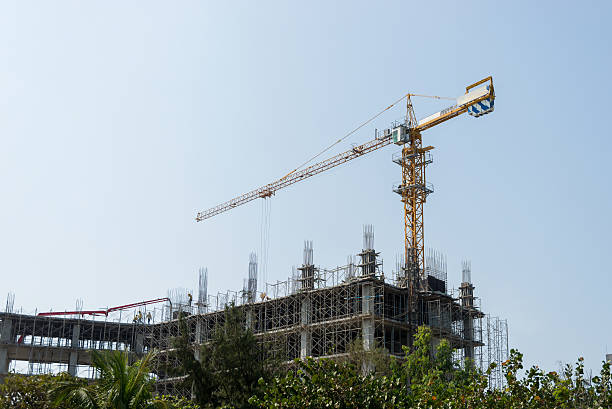Starting a land development project can be both exciting and daunting. Whether you’re planning to build residential homes, commercial spaces, or mixed-use developments, there are several essential pre-development steps you must take to ensure a successful project. Proper preparation can save you time, money, and headaches down the line. Here’s a guide to help you navigate the crucial steps before embarking on your land development journey.
1. Conduct a Feasibility Study
Before diving into any land development project, conducting a feasibility study is vital. This study assesses the project’s viability from various angles, including economic, environmental, and legal perspectives. Start by analyzing the market demand for the type of development you’re considering. For instance, if you aim to build residential properties, evaluate local housing trends, demographics, and potential competition.
Additionally, consider the financial aspects. Estimate the project’s costs, including land acquisition, construction, permits, and ongoing maintenance. Compare this against potential revenue to ensure the project can deliver a reasonable return on investment.
2. Assemble a Skilled Team
A successful land development project requires a skilled team of professionals. This typically includes:
- Land Planners: Experts who can help create a development plan that meets local zoning regulations and community needs.
- Architects: Professionals who will design the layout and aesthetics of the buildings.
- Civil Engineers: Engineers who will ensure that infrastructure such as roads, drainage, and utilities are properly designed and integrated.
- Surveyors: Specialists who can accurately map the land and identify any topographical challenges.
- Legal Advisors: Lawyers experienced in land use and real estate law can guide you through legal requirements and potential liabilities.
Establish clear communication and expectations within your team to facilitate a smooth development process.
3. Understand Zoning and Land Use Regulations
Zoning regulations dictate how land can be used in a particular area, so understanding these laws is crucial. Check with local zoning offices to determine what types of developments are permitted on your land. You may need to apply for zoning variances or special permits if your project doesn’t conform to existing regulations.
Familiarize yourself with land use planning guidelines that may affect your project, such as density requirements, setback regulations, and environmental impact assessments. Engaging with local government early in the process can also provide insights into any potential changes in zoning laws or upcoming developments in the area.
4. Assess Environmental Impact
Environmental considerations play a crucial role in land development projects. It’s essential to conduct a Stormwater Pollution Prevention Plan (SWPPP) in Ogden to assess how your project might impact the surrounding ecosystem. This assessment should evaluate potential effects on local wildlife, air and water quality, and existing natural resources.
In certain instances, it may be necessary to implement measures to mitigate environmental impacts, such as protecting wetlands or establishing green spaces. Collaborating with environmental consultants can provide valuable guidance in ensuring compliance with local and federal environmental regulations.
5. Secure Financing
Once you’ve conducted a feasibility study and assembled your team, it’s time to secure financing for your project. Explore various funding options, including:
- Traditional Bank Loans: Conventional loans often offer competitive interest rates, but they may require a strong credit history and collateral.
- Private Investors: Consider seeking private investors who are interested in funding land development projects in exchange for equity or a return on investment.
- Government Grants and Programs: Some local and federal programs offer financial assistance for development projects, especially those focusing on affordable housing or community revitalization.
Develop a detailed financial plan that outlines all potential costs and revenue streams, and be prepared to present this plan to potential investors or lenders.
6. Community Engagement
Engaging with the local community is a crucial step that should not be overlooked. Hosting community meetings can help you gather input from residents, address concerns, and create a sense of transparency around your project. Community feedback can provide valuable insights into what residents want or need, which can enhance your project’s acceptance and success.
Additionally, building positive relationships with community leaders and stakeholders can facilitate smoother interactions with local authorities and help you navigate the approval process more effectively.
7. Obtain Necessary Permits
Once you have completed the previous steps, it’s time to apply for the necessary permits and approvals. This process can vary significantly depending on the project scope and location. Common permits may include:
- Building Permits: Required for any construction activity.
- Site Development Permits: Needed for site preparation and infrastructure work.
- Environmental Permits: Required if your project impacts natural resources or ecosystems.
Start this process early, as obtaining permits can take time, and delays can affect your project timeline.
In Conclusion
Preparing for a land development project involves careful planning and consideration of various factors. By conducting a feasibility study, assembling a skilled team, understanding zoning regulations, assessing environmental impacts, securing financing, engaging the community, and obtaining the necessary permits, you can lay a solid foundation for your project. Taking these essential pre-development steps not only increases the likelihood of success but also sets the stage for a smooth and efficient development process. Start your journey well-prepared, and watch your vision come to life.

